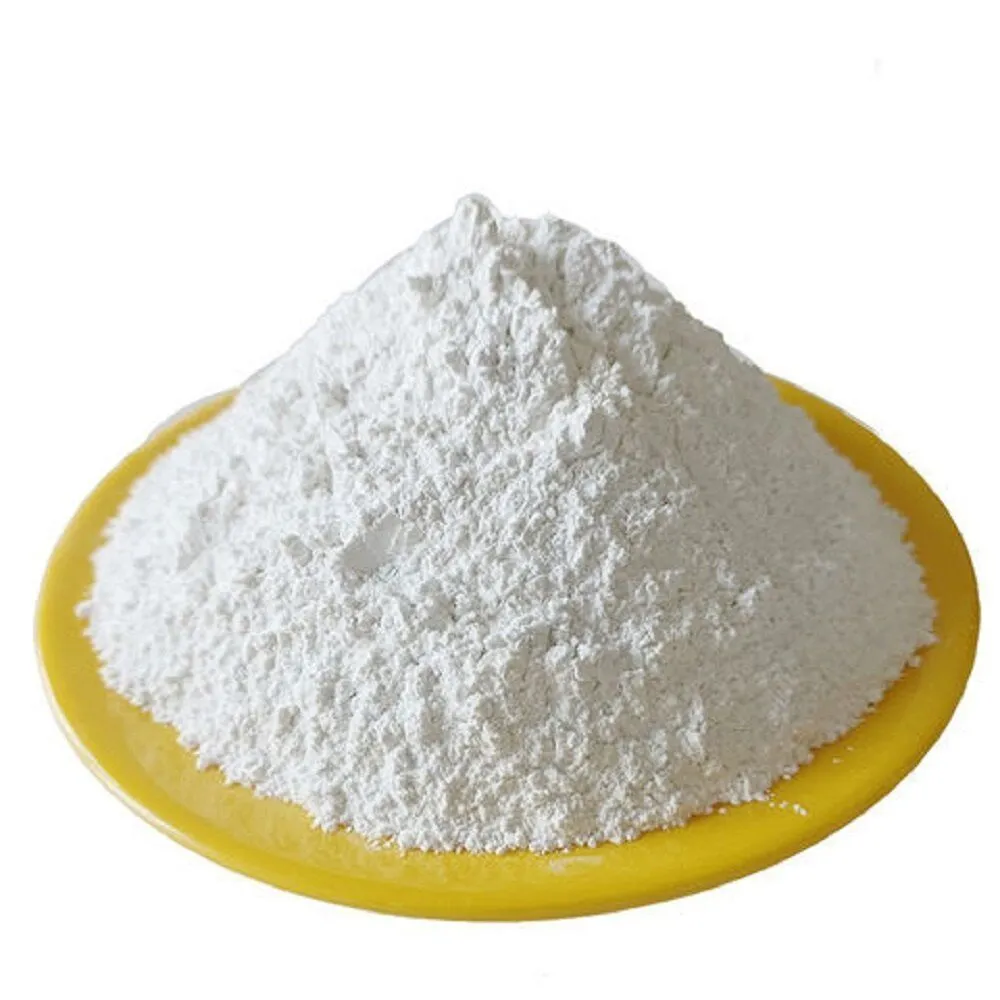How Can Activated Calcium Carbonate Boost Manufacturing Efficiency?

Activated calcium carbonate has emerged as an essential ingredient in modern manufacturing processes. It offers various advantages that improve productivity, enhance product quality, and contribute to more sustainable practices. By understanding the role of this compound in different industries, manufacturers can unlock its potential to enhance efficiency.
What is Activated Calcium Carbonate?
Activated calcium carbonate is a form of calcium carbonate that has undergone a process to increase its surface area, making it more reactive and effective for a variety of applications. This material is commonly used in industries such as plastics, rubber, paper, and paints, due to its ability to improve the properties of products and reduce costs.
Key Benefits in Manufacturing
1. Enhanced Product Quality
Activated calcium carbonate can help improve the quality of manufactured goods. In the plastic industry, for example, its use leads to stronger and more durable products. It also enhances the processing of materials, making them easier to mold and shape. When used in paints, it improves texture and opacity, ensuring a smoother and more uniform finish.
2. Cost-Effectiveness
One of the most significant advantages of activated calcium carbonate is its cost-efficiency. By replacing more expensive raw materials, manufacturers can reduce production costs without compromising on quality. For instance, in the production of rubber, this compound can substitute for carbon black, offering savings while still maintaining the desired product properties.
3. Improved Processing and Efficiency
In various manufacturing processes, activated calcium carbonate plays a crucial role in improving the flow and processing of materials. For example, in paper production, it helps control the viscosity of the slurry, making it easier to handle and process the paper pulp. Additionally, its use in plastics and coatings helps improve the flow properties, resulting in smoother production and less downtime.
Environmental Impact
1. Sustainable Practices
Activated calcium carbonate contributes to sustainability in manufacturing. As a natural material, it is often considered more environmentally friendly than synthetic alternatives. It is non-toxic and biodegradable, making it a safer choice for both the environment and human health. Many industries are now turning to this compound to align with eco-friendly standards and reduce their carbon footprints.
2. Reducing Carbon Emissions
Manufacturers can use activated calcium carbonate to reduce their reliance on carbon-intensive raw materials, which in turn helps decrease overall carbon emissions. By using it in place of other fillers and additives, manufacturers can lower the environmental impact of their processes, contributing to a more sustainable manufacturing ecosystem.
Applications in Different Industries
Plastics
In the plastics industry, activated calcium carbonate is often used as a filler to improve the strength, durability, and processing of plastic products. It enhances the performance of plastics, especially in applications where light-weight materials are essential.
Rubber
Activated calcium carbonate is commonly used in the production of rubber products. It acts as a reinforcing agent, improving the mechanical properties of rubber, making it more durable and longer-lasting.
Paper
In the paper industry, activated calcium carbonate is used to enhance the brightness and smoothness of paper products. It also helps in reducing the consumption of expensive bleaching agents, which results in lower production costs.
Paints and Coatings
In the paints and coatings industry, activated calcium carbonate is used to provide better texture, opacity, and consistency. It contributes to improved performance, ensuring that the final product has the desired appearance and functionality.
Conclusion
Activated calcium carbonate plays a pivotal role in boosting manufacturing efficiency across various industries. By improving product quality, reducing costs, and supporting more sustainable manufacturing practices, this compound offers significant benefits. As industries continue to evolve, its applications are likely to expand, further solidifying its place as an essential material in modern manufacturing.
Most Read
- #Activated Calcium Carbonate
- #best dentist in udaipur
- #Dentist in Udaipur
- #Digital Advertising Courses in Udaipur
- #jodhpur taxi service
- #Restorative dentistry in udaipur
- #short tour of rajasthan
- #thai spa in udaipur
- #tour operators in Rajasthan
- 5-star-luxury-hotel-in-gandhinagar
- Android Application Development
- Benefits of Thai Spa
- Best Bridal Makeover Studio in Udaipur Bridal makeup artist in udaipur
- best camp in Jaisalmer
- best desert camp in Sam Jaisalmer
- Best Desert Camps in Jaisalmer
- Best Desert Camps In Jaisalmer Luxury Tent In Jaisalmer
- Best Hotel in Dwarka
- Best Hotel in Udaipur
- best hotel in udaipur Best room in udaipur
- Best Hotel Management Company in India
- best hotels in gandhinagar
- best Jaisalmer tour package
- best makeup artist in Udaipur
- best marble in india
- Best Spa Center in Udaipur
- best spa in Udaipur
- best taxi service in Rajasthan
- best tour operator in rajasthan
- Best Vastu Consultant in India
- best wedding planners in Jaisalmer
- best wooden shoe rack
- book jaisalmer desert camp
- Book Luxury hotel and resort in Dwarka
- Book Luxury Hotel room in Dwarka Luxury Villas in Dwarka
- Book Make up Artist in Udaipur
- Bridal Makeover Studio in Udaipur
- Bridal makeup in udaipur
- Budget Camps In Jaisalmer
- Budget Camps In Jaisalmer star gazing in jaisalmer
- Budget hotel in Jaisalmer
- Buy Al Fakher Online
- Buy Furniture Online
- Buy Hand Block Print Bedsheets Online Buy Dining Table Runners Online In India
- buy king size bed online
- buy sofa Furniture online
- Buy Wood Coffee Table
- Buy Wooden Furniture Online in India
- cab service in Jaisalmer
- cafes in Udaipur
- Camel Safari in Jaisalmer
- Camps In Jaisalmer
- car ac repair
- City Palace Udaipur
- Core PHP vs Frameworks
- Couple Massage
- Deep Tissue Massage
- Deep Tissue Massage in Udaipur
- Deep Tissue vs. Gentle Massage
- desert adventure camp in Jaisalmer
- Desert Camp in Jaisalmer
- Desert Camping Tours
- desert camps in Jaisalmer
- Desert Camps In Jaisalmer best Jaisalmer tour package
- desert safari in Jaisalmer
- Four-Hands Massage in Udaipur
- furniture shop in Udaipur
- Gadisar Lake
- Graphics Design Company In Udaipur
- guest makeup in Udaipur
- Half Day Camel Safari
- Hand Block Printed Saree
- Hotel Housekeeping
- Hotel HR
- Hotel Management Academy in Kota
- Hotel Management Course
- Hotels Dwarka Beach
- Hotels in Gandhinagar 5 star hotel in gandhinagar
- international hotels in udaipur
- Jaipur
- Jaisalmer
- jaisalmer desert camp Festival & Event Tour
- Jaisalmer Desert Camps
- Jaisalmer Fort
- jaisalmer Resort in Jaisalmer Overnight Camel Safari
- Jaisalmer Sightseeing Tour
- Jaisalmer Travel Guide
- Jaisalmer-sightseeing tours
- Jaisalmer’s Hidden Forts
- Kid Indoor Play Equipment Activity Toys Manufacturer
- Leading Hotel Management Company
- Longewala
- Luxury Camps In Jaisalmer
- Luxury Camps In Jaisalmer Desert Swiss Tent
- Luxury Tent In Jaisalmer
- Luxury tents In Jaisalmer
- Marble manufacturers in India
- Marble suppliers in India
- Markets of Yavatmal
- Massage
- Multani Mitti Exporters
- Multani Mitti exporters in India
- Multani Mitti Manufacturer
- Multani Mitti suppliers
- Multani Mitti Suppliers In India
- Natural Stone Supplier in India
- online taxi booking in udaipur
- Overnight Camel Safari
- Party Makeup in udaipur
- Rajasthan Tour Itinerary
- Ranthambore
- Ranthambore Jungle Safari
- Ranthambore Safari Booking
- Ranthambore Safari Zones
- Resort in Dwarka Luxury Hotel room in Dwarka
- Resort in Jaisalmer
- Sandstone suppliers in india
- Spa in Udaipur
- Standard Rooms in Jaisalmer
- star gazing in jaisalmer
- taxi service in Jaisalmer
- Taxi Service in Jodhpur Tempo Traveller in Jodhpur
- taxi service in Udaipur
- tents in Jaisalmer
- Thai Massage
- Thai massage in Udaipur
- udaipur
- Udaipur at Night
- Udaipur makeup artist
- Vapor station UAE
- Waghadi River
- Wall Plates
- Web Design
- Web Design Trends
- Website Development Company In Udaipur
- wedding venues in Udaipur
- White Mist Granite in India







